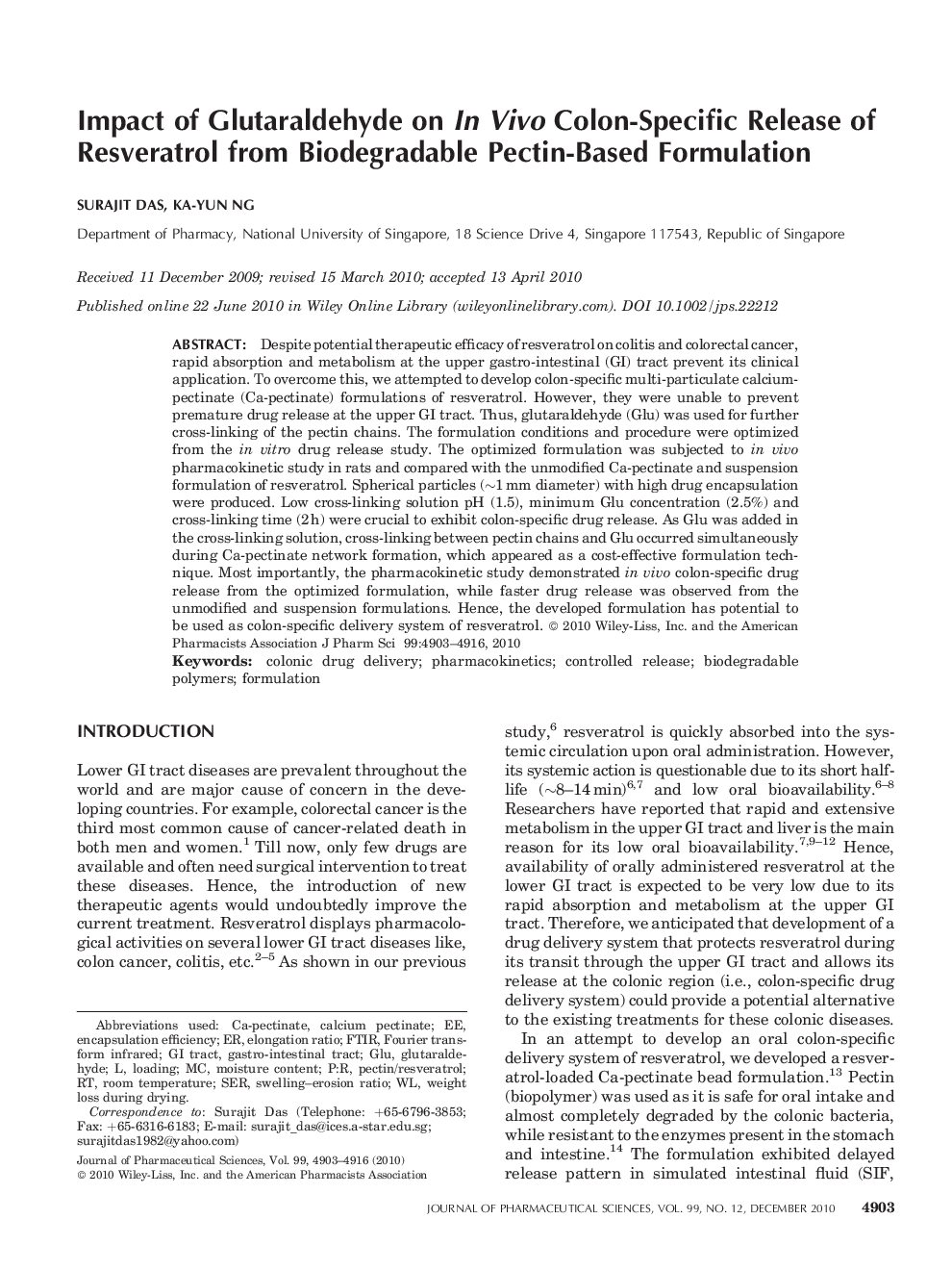| Article ID | Journal | Published Year | Pages | File Type |
|---|---|---|---|---|
| 2484922 | Journal of Pharmaceutical Sciences | 2010 | 14 Pages |
Abstract
Despite potential therapeutic efficacy of resveratrol on colitis and colorectal cancer, rapid absorption and metabolism at the upper gastro-intestinal (GI) tract prevent its clinical application. To overcome this, we attempted to develop colon-specific multi-particulate calcium-pectinate (Ca-pectinate) formulations of resveratrol. However, they were unable to prevent premature drug release at the upper GI tract. Thus, glutaraldehyde (Glu) was used for further cross-linking of the pectin chains. The formulation conditions and procedure were optimized from the in vitro drug release study. The optimized formulation was subjected to in vivo pharmacokinetic study in rats and compared with the unmodified Ca-pectinate and suspension formulation of resveratrol. Spherical particles (~Â 1Â mm diameter) with high drug encapsulation were produced. Low cross-linking solution pH (1.5), minimum Glu concentration (2.5%) and cross-linking time (2Â h) were crucial to exhibit colon-specific drug release. As Glu was added in the cross-linking solution, cross-linking between pectin chains and Glu occurred simultaneously during Ca-pectinate network formation, which appeared as a cost-effective formulation technique. Most importantly, the pharmacokinetic study demonstrated in vivo colon-specific drug release from the optimized formulation, while faster drug release was observed from the unmodified and suspension formulations. Hence, the developed formulation has potential to be used as colon-specific delivery system of resveratrol.
Related Topics
Health Sciences
Pharmacology, Toxicology and Pharmaceutical Science
Drug Discovery
Authors
Surajit Das, Ka-Yun Ng,
